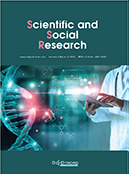Abstract
To address the complexity of the departmental coordination with others effectively, an approach for selecting emergency alternatives based on multi-granularity linguistic and multidivisional cooperation was presented. Firstly, multi-granularity linguistic phrases were employed to express the preference information, and some transformation functions were used to unify the multi-granular linguistic phrases into a uniform linguistic label set. Secondly, the evaluation indexes of key attributes with respect to each combination of alternations were determined considering multidivisional cooperation. Furthermore, according to the evaluation indexes and the weight vector of key attributes, the comprehensive value of each combination alternative was determined to obtain the best alternative. Finally, a case study of low-attitude airspace emergency rescue after an earthquake is presented to illustrate the validity of the approach.
References
Qi K, Wang Q, Duan Q, et al., 2018, A Multi-Criteria Comprehensive Evaluation Approach for Emergency Response Capacity with Interval 2-Tuple Linguistic Information. Applied Soft Computing, 72(11): 419–441.
Shen YS, Wang P, Li MP, et al., 2019, Application of Subway Foundation Pit Engineering Risk Assessment: A Case Study of Qingdao Rock Area, China. KSCE Journal of Civil Engineering, 23(11): 4621–4630.
Li S, Wei C, 2019, A Two-Stage Dynamic Influence Model-Achieving Decision-Making Consensus Within Large Scale Groups Operating with Incomplete Information. Knowledge-Based Systems, 189: 105132.
Jahangoshai Rezaee M, Yousefi S, Eshkevari M, et al., 2020, Risk Analysis of Health, Safety and Environment in Chemical Industry Integrating Linguistic FMEA, Fuzzy Inference System and Fuzzy DEA. Stochastic Environmental Research and Risk Assessment, 34: 201–218.
Rodríguez RM, Labella A, De Tré G, et al., 2018, A Large Scale Consensus Reaching Process Managing Group Hesitation. Knowledge-Based Systems, 159: 86–97.
Wang ZQ, Chen ZS, Garg H, et al., 2022, An Integrated Quality-Function-Deployment and Stochastic-Dominance-Based Decision-Making Approach for Prioritizing Product Concept Alternatives. Complex & Intelligent Systems, 8(3): 2541–2556.
Haghshenas SS, Barmal M, Farzan N, 2016, Utilization of Soft Computing for Risk Assessment of a Tunneling Project Using Geological Units. Civil Engineering Journal, 2(7): 358–364.
Islam MS, Nepal MP, Skitmore M, et al., 2017, Current Research Trends and Application Areas of Fuzzy and Hybrid Methods to the Risk Assessment of Construction Projects. Advanced Engineering Informatics, 33: 112–131.
